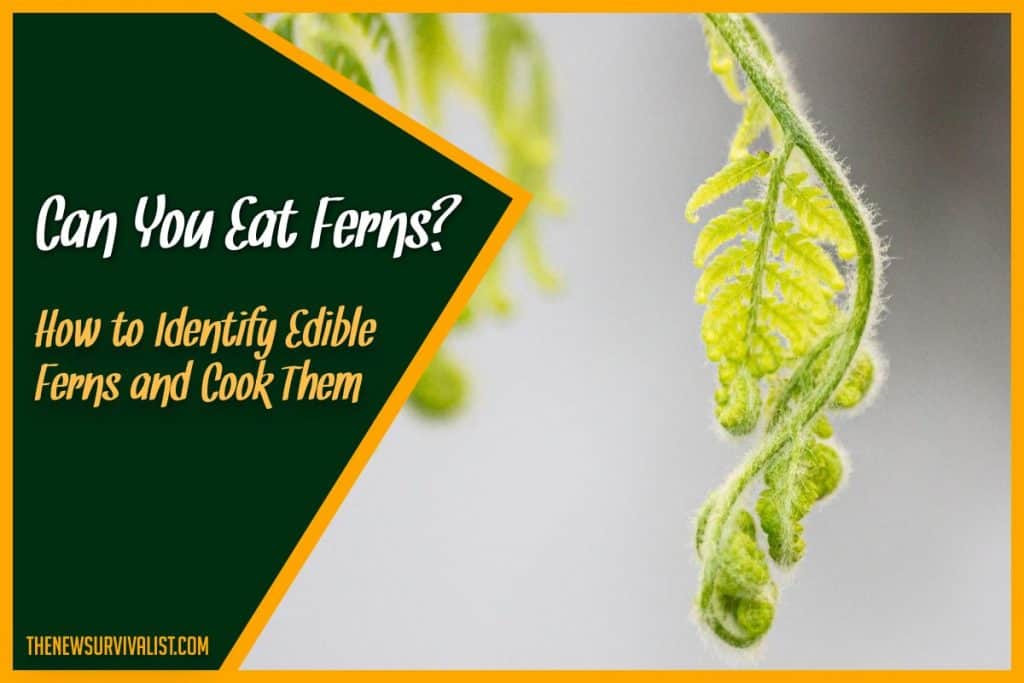Ferns are seedless, non-flowering plants with feathery or leafy fronds. They are commonly used as ornamental plants because of their appearance and bright colors, but some species are also harvested from the wild to be cooked as vegetables.
Can you eat ferns? Humans have been eating ferns for thousands of years, but not all fern species are edible. There are three main species of edible fern: the ostrich fern, the lady fern, and the bracken fern. Edible ferns can be delicious but need to be boiled or steamed to become safe to eat. Ostrich ferns are believed to be the tastiest and safest to eat.
This article will discuss edible ferns, called “fiddleheads,” and differentiate the three main species. It will also explain how to identify edible ferns and harvest them from the wild. Lastly, we also discuss how to prepare fiddleheads for safe consumption.
What Are Fiddlehead Ferns?
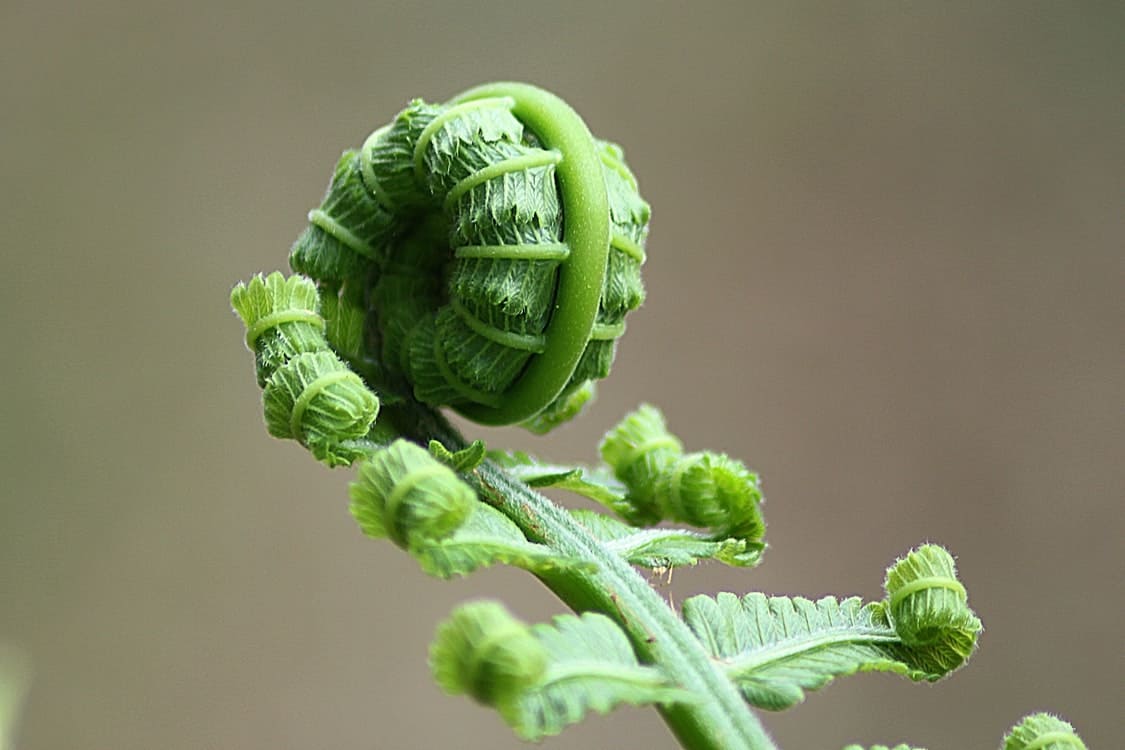
Strictly speaking, a “fiddlehead fern” is not a type of fern but the earliest stage in fern growth. As ferns mature, new fronds unroll and grow upward: the “fiddleheads” are fronds that have yet to unfurl and are still tightly wound and close to the ground.
Fiddleheads are characteristic of young ferns. Even though all ferns have a fiddlehead stage, edible ferns are called “fiddlehead ferns” because they are harvested as young plants. The fronds of mature ferns are bitter and should not be eaten.
Humans have been eating ferns for thousands of years. Edible ferns are mentioned in Chinese literature as early as 3000 years ago, and it is believed to have been a common item in Medieval Europe. Today, ferns are eaten mainly in North America (the USA and Canada) and in New Zealand and Japan.
Several fern species are edible, but “fiddlehead fern” generally refers to the ostrich fern (Matteucia struthiopteris). The ostrich fern is safest for consumption and has the lowest toxicity; in contrast, other edible species are toxic or carcinogenic when raw.
The ostrich fern grows in damp, temperate areas and is widespread throughout the northern hemisphere, mainly thriving in cooler climates. As with other edible ferns, ostrich ferns are harvested in the spring before the fronds unfurl. The “fiddlehead stage” lasts only for a few days, and ferns are not cultivated but foraged only in the wild.
How to Identify and Harvest Edible Ferns
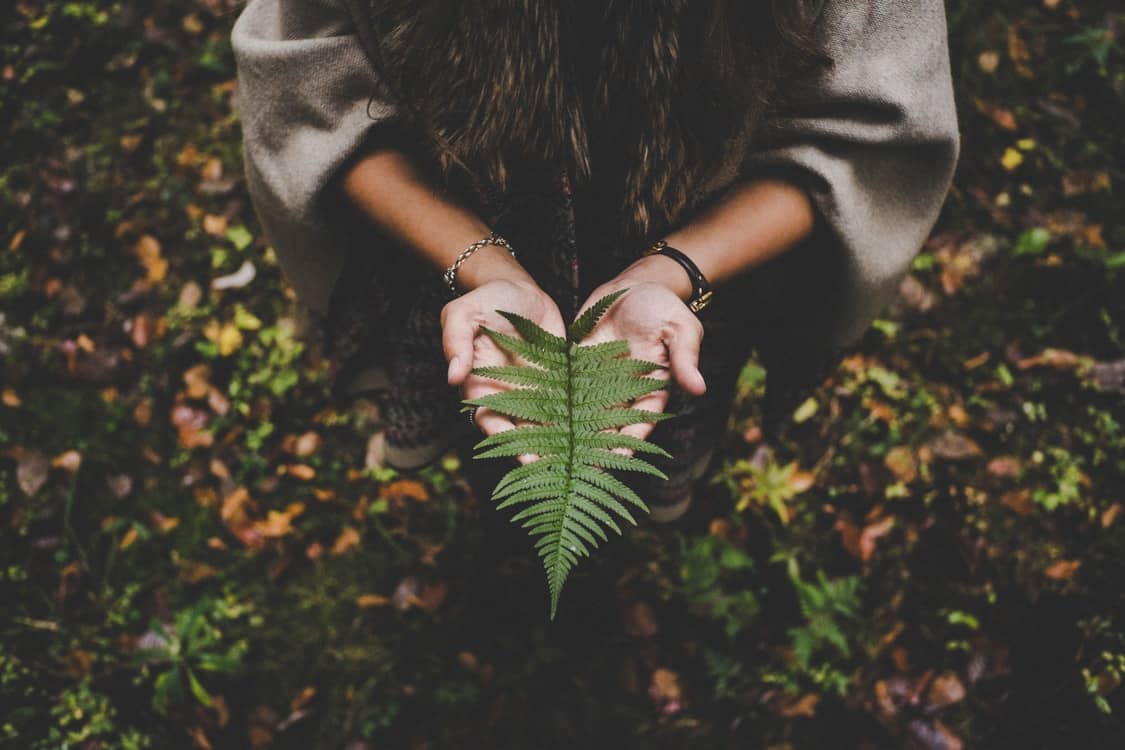
The ostrich fern grows mainly in the northern parts of the United States and Canada; however, it is also found in Eurasia and East Asia. In early spring, they appear along streams and riverbanks or in hardwood forests, preferring shady areas.
The mature ostrich fern is three to six feet tall, and its fronds are arranged in a rosette to form a vase shape. The fronds grow out of rhizomes in the ground (which look like mounds or clumps) and are plume-like when unfurled, resembling the tail feathers of an ostrich.
The fiddleheads of the ostrich fern are about an inch in diameter and have smooth, green stems. In contrast, the coiled tops are covered in brown, paper-thin scales that fall off as the fronds unfurl. The inside of each stem also has a deep U-shaped track similar to the groove in celery.
The brown coverings on the tops of ostrich fern fiddleheads can make them difficult to find by directly looking for the coiled structures. Fiddleheads are more easily found by looking for the deep green stems, which stand out against the dark soil. They should be about one to four inches in height.
In addition to the ostrich fern, the other two main species of edible fern are the lady fern (Athyrium filix-femina) and the bracken fern (Pteridium aquilinum). Like the ostrich fern, the lady fern grows mainly in the temperate northern hemisphere; on the other hand, the bracken fern is more widely distributed and can be found in both tropical and temperate climates.
The lady fern is found in moist forests and meadows, as well as in swamps. Like the ostrich fern, it prefers to grow in the shade; however, it is only two to three feet tall at maturity, and its stems are darker at the base. While lady fern stems exhibit a groove like the ostrich fern’s, it is proportionally smaller.
The bracken fern grows in various habitats, including forests (dry or wet), meadows, clearings, and roadsides. Mature plants are two to four feet tall, and the stems are fuzzy and lack U-shaped grooves. Unlike the ostrich fern, the fiddleheads of the bracken fern are not covered in a brown husk. Each bracken fern has only a single frond.
Harvesting Fiddleheads
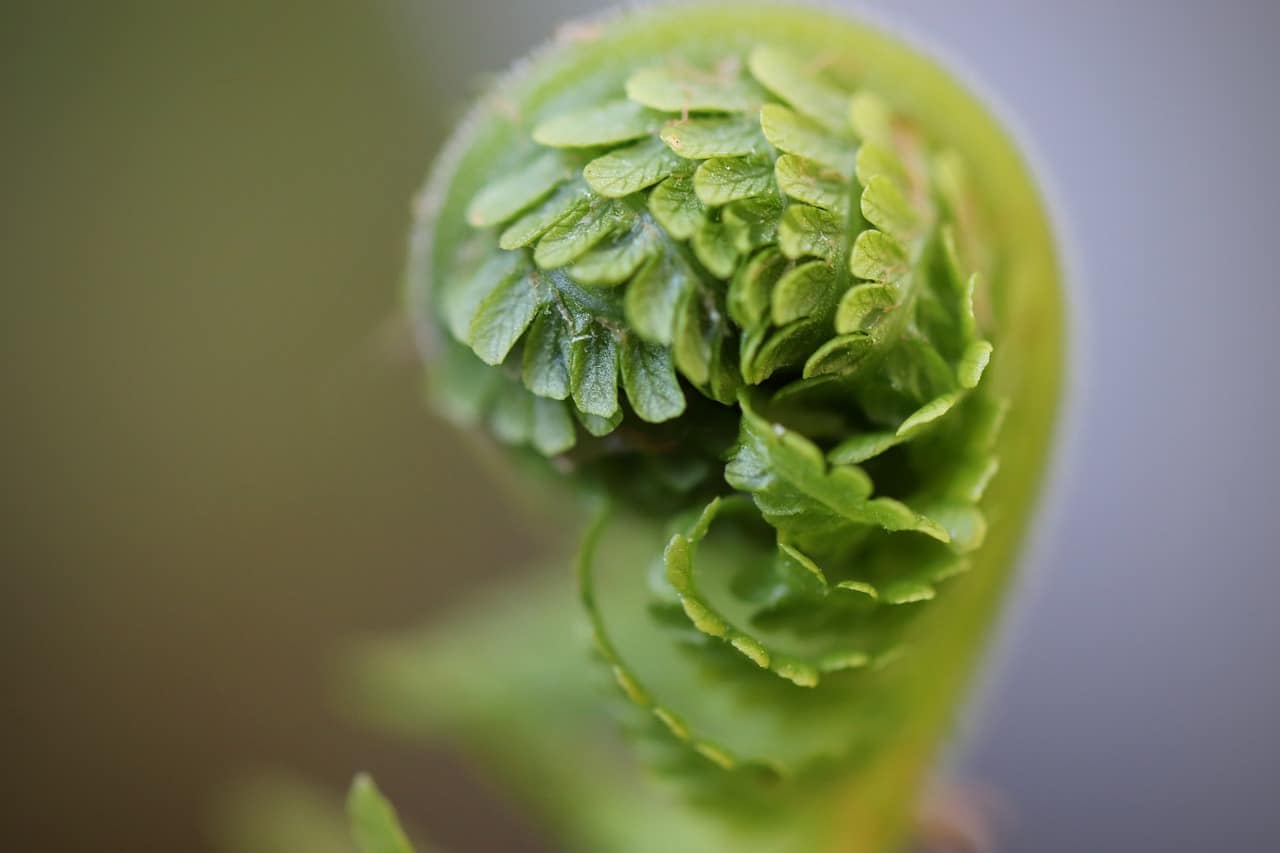
To harvest fiddleheads, pinch and snap the stem about a half-inch to an inch from the tightly coiled head. Never pick a clump clean as this may kill the fern: leaving a few fiddleheads intact also assures next year’s crop.
However, because poisonous ferns can be mistaken for edible species, foraging should be left to the professionals, and it is better to buy edible ferns at the market. Choose fiddleheads with tightly coiled discs and firm, bright green stems. Avoid those that have started to unravel or appear discolored.
Are Edible Ferns Dangerous?
The lady fern and the bracken fern are both edible but can be dangerous when raw. The lady fern contains thiaminase, an enzyme that depletes vitamin B1 in the body. Thiaminase is not toxic when consumed in small quantities by people whose diet is rich in vitamin B1, but it can induce vitamin B1 deficiency in large doses.
Symptoms of vitamin B deficiency (or “beriberi”) include weakness and muscle loss, mental confusion or speech difficulties, and tingling in the hands and feet (also known as “pins and needles”).

On the other hand, bracken fern contains ptaquiloside (PTA) which is a known carcinogen. PTA causes DNA damage, leading to cancers of the digestive tract; furthermore, consumption of bracken fern has been shown to induce intestinal cancer in rats and bladder cancer in cattle. In addition to PTA, bracken fern also contains thiaminase.
Both thiaminase and PTA are broken down by heat, which is why fiddleheads should never be eaten raw or undercooked.
How to Prepare Fiddleheads
Until you are ready to cook them, fiddleheads should be refrigerated to slow down ripening and uncurling. To maximize shelf life, loosely wrap unwashed fiddleheads in a paper towel and refrigerate them in a sealed plastic bag. When refrigerated, fiddleheads can remain edible for up to 10 days; however, their flavor fades over time, so it is still best to consume them shortly after purchase.
Before cooking fiddleheads, you should wash them in cold, running water to remove any dirt or residual soil; afterward, place them in a bowl of water and use your fingers to rub off the brown husk. To cook fiddleheads, you should either boil them for 15 minutes or steam them for 10-12 minutes until tender. Discard the water used for boiling or steaming the fiddleheads.
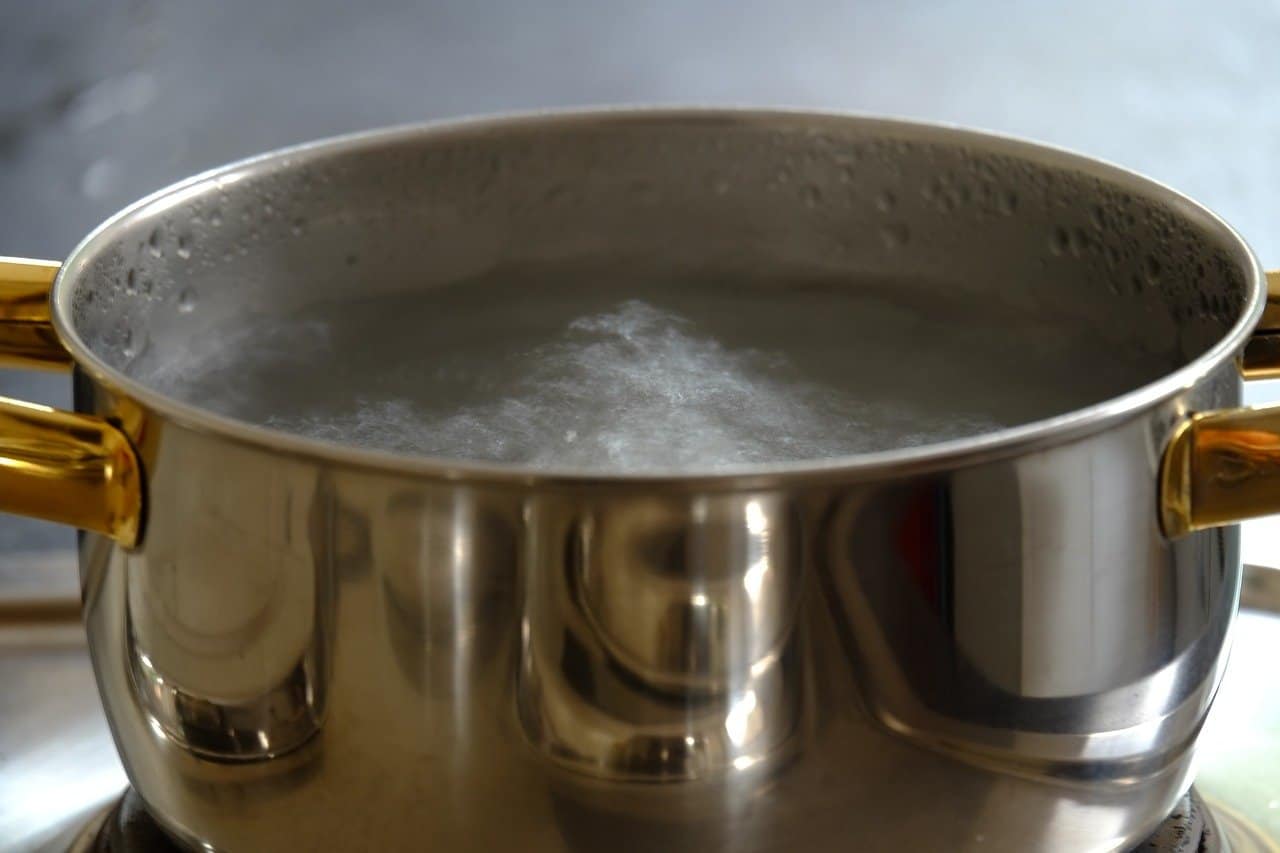
It is essential to thoroughly cook fiddleheads before using them in a recipe to neutralize any harmful elements. In outbreaks of foodborne illness associated with fiddleheads, the ferns eaten were usually either raw or only lightly cooked (sautéed, parboiled, or microwaved).
Once rendered safe to eat through boiling or steaming, fiddleheads can be prepared like any other vegetable. Many describe its taste as a cross between asparagus and green bean with an additional hint of nuttiness.
Final Thoughts
Edible ferns can give you a taste of spring, but only certain species. The ostrich fern is the safest species to eat, but the lady fern and the bracken fern can also be eaten if prepared properly. Regardless of species, you should only consume ferns in the “fiddlehead” stage, when the plant is still young.
Even “edible” fern species can carry poisons such as thiaminase or carcinogens such as ptaquiloside (PTA). Thiaminase can cause vitamin B1 deficiency, while PTA can induce cancers of the digestive tract. To neutralize these harmful elements, you can either boil fern fiddleheads for 15 minutes or steam them for 10-12 minutes. After this step, fiddleheads can be used in recipes like any other vegetable.

